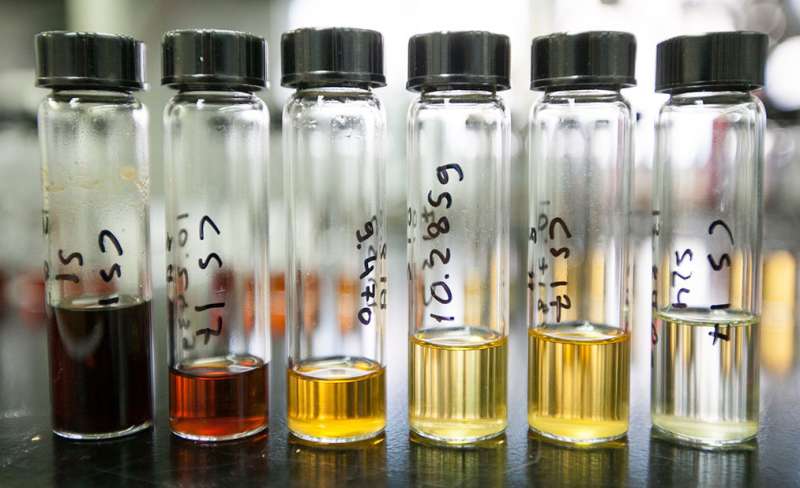Engineering yeast tolerance to a promising biomass deconstruction solvent

To convert plant matter to fuel and other sustainable bioproducts, it must first be broken into digestible sugars for microbes. Gamma-valerolactone (GVL) is a promising chemical solvent for biomass degradation. However, it is toxic to fermentative microbes. Scientists discovered the mechanisms of GVL toxicity to fermentative microbes. They identified gene deletions that created sensitivity or tolerance to the solvent. They used this knowledge to engineer a fermenting yeast strain with improved tolerance to GVL and enhanced conversion of sugars to biofuel.
The team modified the yeast using chemical genomic-guided engineering. It offered a rapid method for tailoring existing yeast strains to specific chemical stressors. The work suggests a way to create a GVL-tolerant yeast strain with increased conversion to biofuel efficiency.
Biomass deconstruction using the solvent GVL has several advantages over more traditional deconstruction methods; however, biological conversion to biofuels can be challenging, as fermentation microbes are sensitive to any residual GVL. Researchers at the Great Lakes Bioenergy Research Center sought to identify the mechanisms of GVL toxicity using chemical genomics, which measures the impact of small molecules on microbes by deleting nonessential genes. Chemical genomics profiling of GVL predicted that this chemical affects the membranes and membrane-bound processes of the fermenting yeast strain Saccharomyces cerevisiae.
Their research showed that GVL has a toxic effect on S. cerevisiae cell membrane integrity, which is magnified by ethanol produced during fermentation. Their analysis also revealed that deletion of enzymes Pad1p andFdc1p mediated toxicity to GVL in an engineered fermenting yeast strain. Moreover, deletion of PAD1 and FDC1 in a fermenting yeast strain, led to improved growth, sugar utilization, and ethanol production in synthetic hydrolysate-containing GVL relative to the non-engineered strain. Chemical protein analysis of the engineered strain revealed that enzymes involved in cell membrane biosynthesis were more abundant in the presence of GVL and cellular levels of this sterol were elevated compared to the non-engineered strain.
These results suggest that one route to GVL tolerance in yeast is through alteration of membrane fluidity. Future studies are needed to address the role of PAD1 and FDC1 in cell membrane biosynthesis. This study also illustrates the utility of chemical genomics approaches to rapidly identify cellular targets of small molecules and strategies to engineer microbial strains for improved biofuel and bioproduct production.
More information: Scott Bottoms et al. Chemical genomic guided engineering of gamma-valerolactone tolerant yeast, Microbial Cell Factories (2018). DOI: 10.1186/s12934-017-0848-9
Provided by US Department of Energy


















